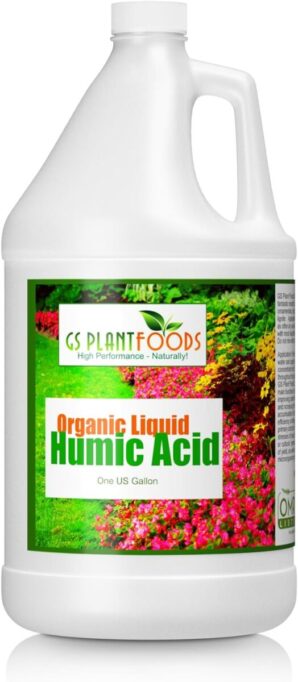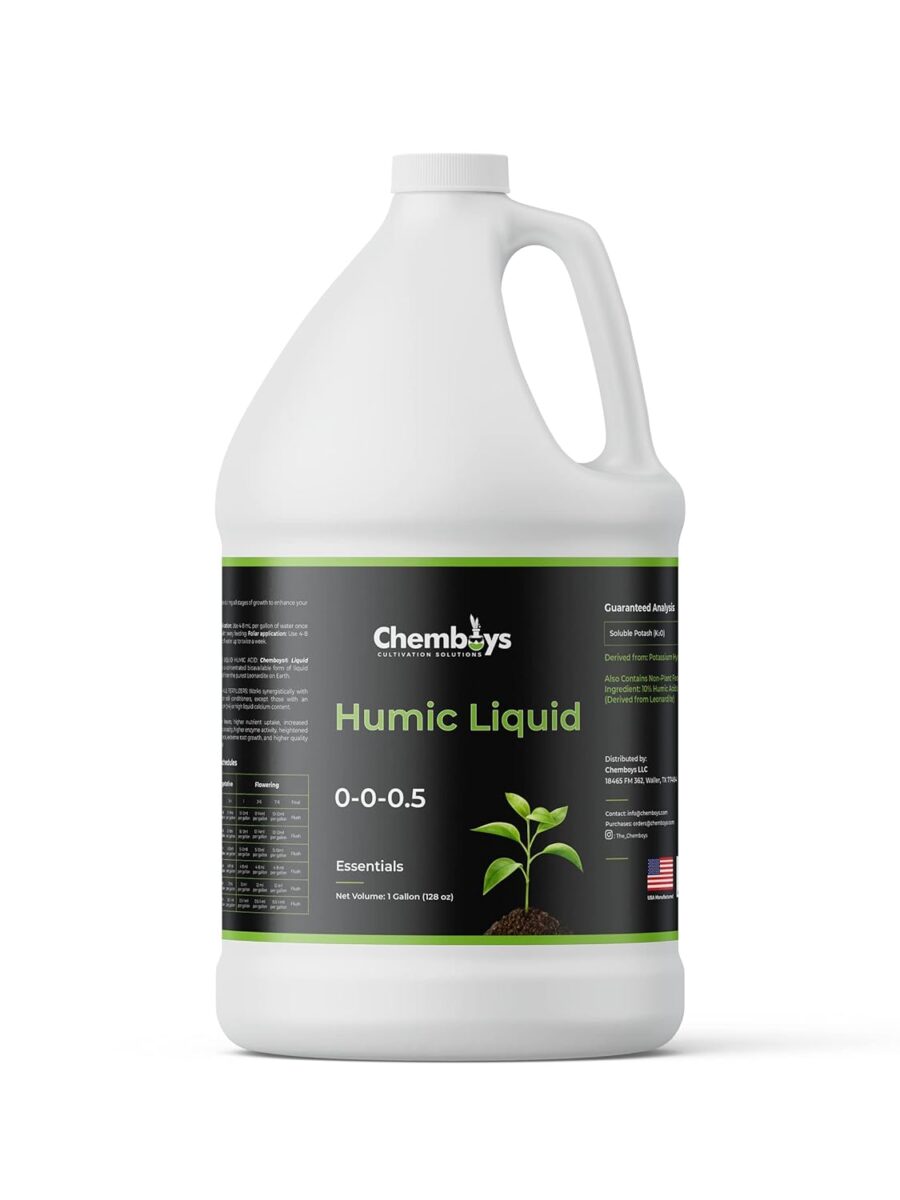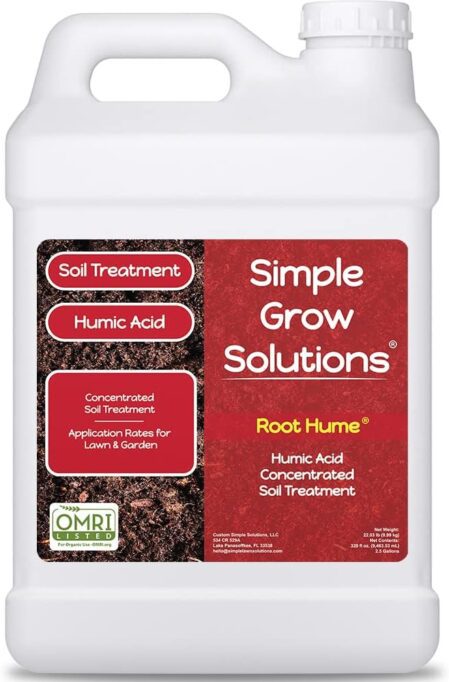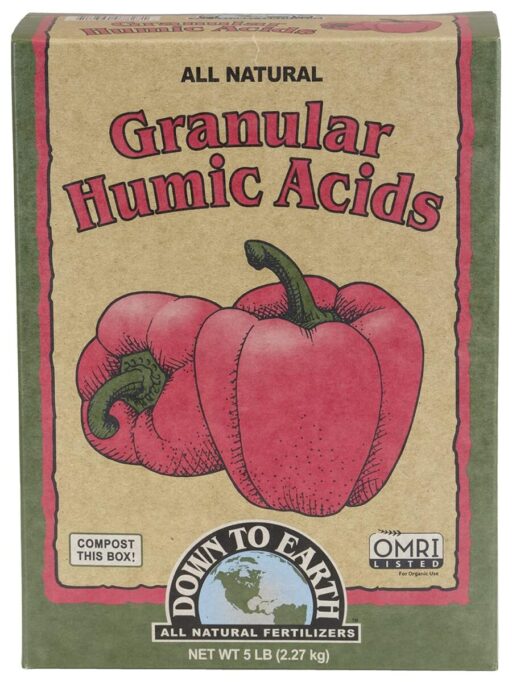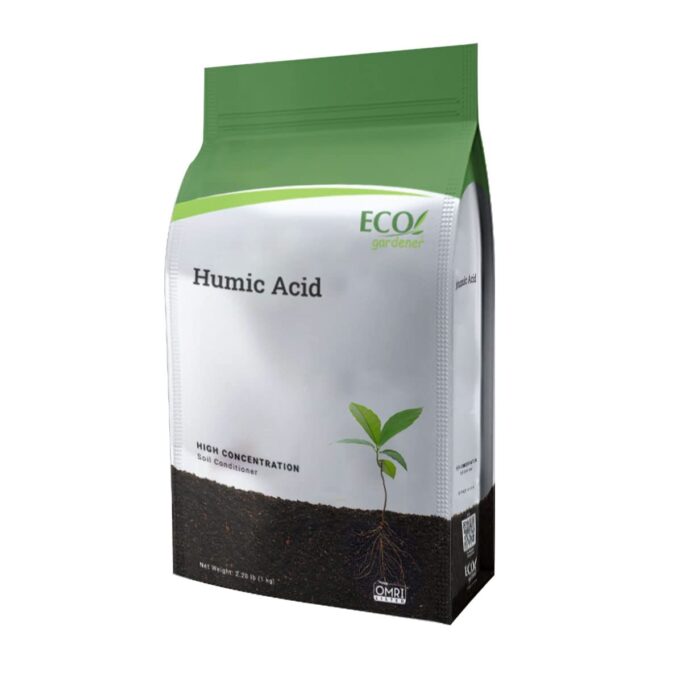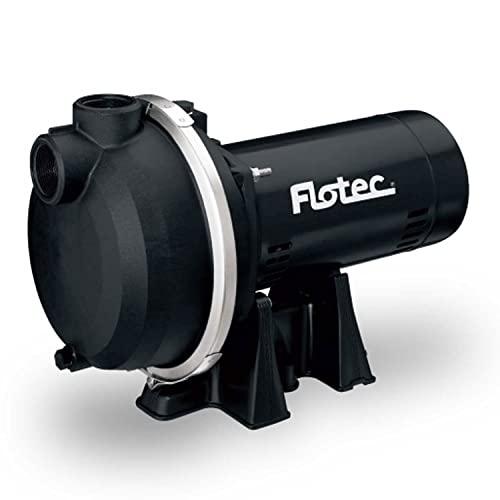Humic Acid for Lawns: Enhancing Soil Health and Nutrient Uptake
When it comes to nurturing lush, vibrant lawns, humic acid emerges as a powerful ally. Derived from the decayed remains of organic matter, humic acid is rich in essential nutrients. Despite its name, it’s more akin to a beneficial tonic than a harmful substance. Think of it as the “orange juice” for your soil—packed with vitamins and goodness!
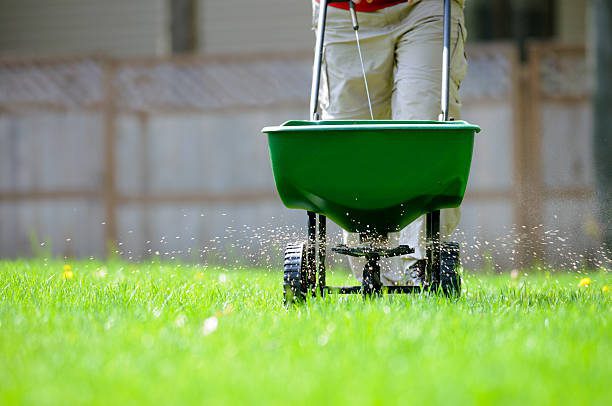
Table of Contents
1. What Is Humic Acid?

The Microbe Poop That Transforms Your Lawn
When you gaze upon your lush lawn, you’re witnessing the result of a complex underground ballet—a dance choreographed by tiny, unseen performers. Enter humic acid, the unsung hero responsible for turning ordinary soil into a nutrient-rich haven for your grass.
Definition: The Essence of Decay
Humic acid emerges from the microbial alchemy of decayed plant material. Imagine it as nature’s recycling program—the final remnants of organic matter transformed into a potent elixir. It’s like microbe poop—tiny, rich, and odorless. But don’t let its humble origins fool you; this unassuming substance packs a powerful punch.
Nutrient Bridge: Connecting Roots and Soil Elements
Think of humic acid as the bridge between your lawn’s roots and the soil. It’s the nutrient superhighway that turbocharges nutrient absorption. Here’s how it works:
Imagine humic acid as a friendly handshake between nutrients and grass roots—a nutrient superhighway that turbocharges growth. It chelates essential nutrients, ensuring your lawn feasts on a balanced diet. Like a sponge, it holds water, quenching your turf’s thirst even during scorching summers. Crumbling compacted soil, it creates a hospitable environment for roots. Darkening the soil, it acts as a solar panel, maximizing sun energy absorption. And as the soil anchor, it prevents erosion, keeping your lawn pristine. Sprinkle some humic acid, water it in, and watch your grass thrive! 🌱✨
The Nitrous Boost for Your Lawn’s Engine
Remember those souped-up cars with nitrous oxide injection? Humic acid is your lawn’s equivalent. It revs up nutrient uptake, ensuring your grass thrives, not just survives. So, next time you admire your emerald carpet, tip your hat to the microbial maestros and their magical byproduct—humic acid.
Black gold for soil
Humic acid, often referred to as “black gold,” earns its illustrious nickname due to its remarkable impact on soil health and plant growth. Let’s delve into the reasons behind this moniker:
- Rich Color: When you encounter humic acid, whether in its natural form or as a supplement, its dark, almost black color stands out. This deep hue results from the concentration of organic matter and the breakdown of plant material over time. Just as gold gleams with richness, so does humic acid.
- Nutrient Treasure: Like gold, humic acid is a treasure trove of nutrients. It contains essential elements such as carbon, hydrogen, oxygen, and nitrogen. Additionally, it acts as a chelator, binding to minerals and making them more accessible to plants. This nutrient-rich profile contributes to its value in soil improvement.
- Soil Enrichment: Humic acid enhances soil structure, water retention, and nutrient availability. It improves aeration, allowing roots to explore and thrive. Just as gold enriches fortunes, humic acid enriches soil, leading to healthier, more vibrant plant life.
- Historical Significance: Throughout history, civilizations have revered gold for its rarity, beauty, and practical uses. Similarly, humic acid’s role in promoting plant health and crop yield has been recognized for centuries. Its ability to rejuvenate tired soils mirrors gold’s enduring allure.
So, next time you encounter humic acid in your garden, remember that beneath its unassuming appearance lies a potent elixir—the “black gold” that nourishes your plants and cultivates lush landscapes. 🌱
Benefits of Humic Acid for Lawns: Unlocking the Green Potential
Your lawn—more than a patch of grass; it’s your personal oasis, a canvas for picnics, playdates, and barefoot escapades. But how do you transform that ordinary turf into a lush, envy-inducing carpet? Enter humic acid, the unsung hero lurking beneath the soil, ready to unleash its magic.
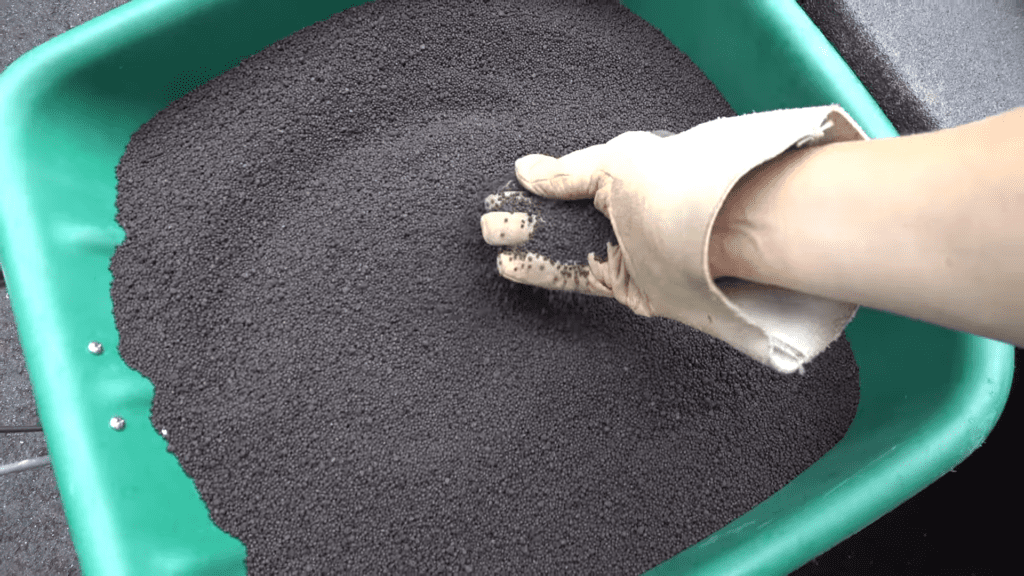
1. Water Retention: Quenching Your Lawn’s Thirst
Imagine your lawn as a thirsty traveler in a desert. Humic acid steps in as the water bearer, ensuring your grass stays hydrated even during dry spells. Here’s how it works:
- Sponge Effect: Humic acid acts like a water-absorbing sponge, holding moisture in the soil. No more parched patches or wilting blades—your lawn sips from this natural reservoir.
2. Nutrient Availability: A Nutrient Buffet for Your Grass
Nutrients—those essential building blocks for healthy growth—are often elusive. But fear not; humic acid is here to play matchmaker. It chelates nutrients, making them readily available to your grass roots. Picture it as a nutrient buffet:
- Calcium: Essential for cell walls and overall plant structure.
- Magnesium: Vital for chlorophyll production and photosynthesis.
- Iron: The green magic behind lush leaves.
Say goodbye to nutrient leaching; your grass feasts on a well-balanced diet.
3. Soil Structure: From Rock-Hard to Root-Friendly
Compacted soil—every gardener’s nemesis. Humic acid wields its crumbly magic, breaking down dense earth. The result? Enhanced aeration and workability. Your grass roots rejoice, exploring their newfound space like kids in a playground.
4. Sun Absorption: Darkening the Soil, Boosting Photosynthesis
Picture humic acid as your lawn’s solar panel. By darkening the soil, it maximizes sun energy absorption. Your grass photosynthesizes with newfound vigor, channeling its inner Hulk. More sun, more growth—simple math.
5. Erosion Prevention: Anchoring Soil in Place
Soil cracking, surface runoff—these are the villains threatening your lawn’s pristine appearance. Humic acid steps up as the soil anchor. It binds soil particles, preventing erosion. No more mudslides ruining your green masterpiece.
In Conclusion: Your Lawn’s Green Revolution
Humic acid isn’t just a soil amendment; it’s your lawn’s backstage pass to greatness. So, sprinkle it, water it, and watch the magic unfold. Your grass will thank you with vibrant hues and velvety texture. 🌱✨
Types of Humic Acid: Liquid vs. Granular
When it comes to humic acid, you have two main options: liquid and granular formulations. Each type has its advantages and drawbacks, so let’s dive into the battle royale between these two contenders.
Liquid Humic Acid
Quick Action, Rapid Absorption
Liquid humic acid is the sprinter of the humic world. Here’s why it’s a favorite among lawn enthusiasts:
- Speedy Delivery: Liquid humic acid is swiftly absorbed by your grass roots. It’s like a turbo boost for nutrient uptake.
- Foliar Spray: Need an emergency lawn pick-me-up? Liquid humic acid shines as a foliar spray. During stressful periods—heatwaves, droughts, or post-aeration shock—spritz your lawn with this elixir.
Application Tips:
- Mix with Water: Dilute the liquid humic acid according to package instructions. Then, drench your lawn. It’s like serving your grass a nutrient-rich smoothie.
Granular Humic Acid
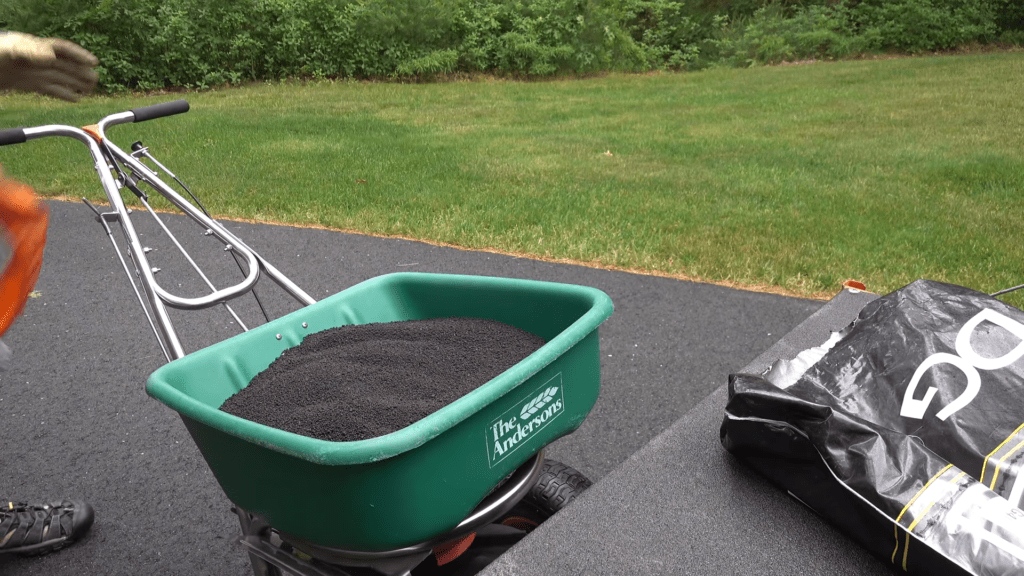
Slow Release, Gradual Nutrient Delivery
Granular humic acid takes the marathon approach. It’s all about long-lasting benefits:
- Steady Nutrient Stream: Granules release nutrients gradually, ensuring your lawn enjoys a sustained feast. No nutrient spikes or crashes here.
- Soil Amendment: When prepping your lawn—whether for seeding, overseeding, or sodding—mix granular humic acid into the soil. It’s like tucking your grass into a cozy bed with a hidden stash of nutrients.
Application Tips:
- Sprinkle Evenly: Imagine you’re seasoning a giant salad. Sprinkle the granules evenly across your lawn.
- Water Thoroughly: Activate the granules by watering your lawn. They’ll gradually release their goodness over time.
Where to buy humic acid near me:
Liquid Humic Acid:
✔ Soil Conditioning: Helps stabilize soil pH and improve water retention, fostering a healthier root system and overall plant immunity.
✔ Versatility: Compatible with all fertilizers except those with low pH or high liquid calcium content, suitable for various plant mediums including gardens, lawns, trees, and crops.
✔ Easy Application: Simple to use by mixing with water and applying directly to the root base, compatible with various sprayers.
✔ Trustworthy and Sustainable: Made in the USA by GS Plant Foods, committed to delivering organic, cost-efficient, and effective products.
❌ Limited Application Compatibility: Not suitable for use with fertilizers containing low pH or high liquid calcium content.
✔ Derived from Pure Leonardite: The product is derived from the purest Leonardite, ensuring high quality and organic composition.
✔ Increased Nutrient Uptake: Helps in the rapid absorption of nutrients by plants, leading to improved plant health and vitality.
✔ Soil Conditioning: Stabilizes soil pH, increases water retention, and promotes a stronger root system, ultimately enhancing soil health.
✔ Versatile Application: Suitable for use in various settings including lawns, hydroponics, gardens, and even indoor plants.
❌ Staining Potential: The concentrated liquid may stain surfaces if not handled carefully during application.
✔ Natural Treatment: Made with natural ingredients, this product is suitable for those looking for organic lawn and garden treatments.
✔ Versatile Application: Can be used on various types of grass including Bermuda, Centipede, St. Augustine, Zoysia, Kentucky Bluegrass, Fescue, Ryegrass, and more, making it versatile for different lawn types.
✔ Proprietary Extraction Method: Utilizes an innovative extraction method for purity, ensuring a more potent and active solution for soil conditioning.
✔ Made in the USA: Manufactured in the USA, ensuring quality standards and supporting local production.
❌ Application Rate: Requires precise application rates, which may be challenging for some users, especially when using a hose-end sprayer.
Granular Humic Acid:
✔ Carbon Enrichment: Biochar and humic acid contribute carbon to the soil, enhancing microbial activity and nutrient retention, which leads to improved soil structure and plant health.
✔ Dispersible Granule (DG) Technology: Features DG Technology, allowing for easy dispersion of particles upon watering, ensuring efficient delivery of humic acid and biochar into the soil without the need for extensive manual labor.
✔ Versatile Application: Can be applied to established lawns, gardens, and landscaping beds, offering flexibility in usage across various outdoor spaces.
✔ Environmentally Friendly: OMRI listed and environmentally friendly, providing peace of mind for environmentally conscious users.
❌ Price: Some users may find the product relatively expensive, especially considering the coverage area and the need for repeated applications.
✔ Concentrated Source: Highly concentrated humic acids derived from natural, carefully mined deposits.
✔ Soil Health: Enhances nutrient uptake and stimulates soil microbial life, promoting long-term soil health.
✔ Versatile Application: Suitable for use on fields, turf, vegetable gardens, and more.
✔ Easy to Use: Granular form allows for convenient application and integration into soil.
❌ Limited Immediate Results: May not provide instant visible results compared to nitrogen-rich fertilizers, as its benefits are more long-term and related to soil health.
❌ Price: Relatively higher price point compared to synthetic alternatives, which may deter budget-conscious users.
✔ Concentrated Formula: Potent concentration supports healthy plant growth, root development, and nutrient uptake.
✔ Improves Soil Health: Rich in nitrogen, phosphorus, and potassium, enhances soil structure, fertility, pH regulation, and water retention.
✔ Full Spectrum Soil Conditioner: Advanced formula improves fertilizer and pesticide efficiency, enhances plant resistance to diseases, and increases yield.
❌ Granular Form Only: Despite claims of being both granular and powdered, the product is only available in granular form, which may not suit all application methods.
❌ Coverage: Some users find the coverage insufficient for their needs, requiring multiple bags for larger areas.
Humic Acid Application Tips: Dos and Don’ts for Lawn Bliss
Your lawn—your personal Eden, the green sanctuary where blades sway in harmony. Enter humic acid, the secret ingredient that elevates your turf from ordinary to extraordinary. But like any magic potion, humic acid requires proper handling. Let’s explore the dos and don’ts for a blissful lawn experience.
Dos: The Path to Lawn Nirvana
1. Timing Is Everything
- Spring Awakening: Apply humic acid in spring when your lawn awakens from its winter slumber. It kickstarts root growth, setting the stage for a vibrant season.
- Fall Farewell: Bid adieu to summer with a fall application. Your grass absorbs nutrients, storing them for the cold months ahead.
2. Dilution Wisdom
- Read the Manual: Humic acid bottles come with instructions—your lawn’s user manual. Follow them diligently. More isn’t always better; moderation is the key.
- Mix with Water: Dilute liquid humic acid as directed. Imagine you’re preparing a delicate herbal tea for your lawn. Too strong, and it might rebel.
3. Consistency Wins
- Routine Love: Regular applications yield lasting benefits. Make humic acid part of your lawn care routine. Your grass will thank you with deeper roots and resilience.
- Patience Pays: Don’t expect overnight miracles. Humic acid works its magic gradually. Think of it as a slow dance with your lawn—steady, enduring, and rewarding.
Don’ts: Avoiding Lawn Drama
1. Acid Panic
- Fear Not: Humic acid won’t harm your lawn. It’s not a villain; it’s a nurturing friend. Embrace it without hesitation.
- No pH Meltdown: Unlike its acidic cousin, humic acid won’t send your soil’s pH into a tailspin. Your grass won’t break into a panic sweat.
2. Overdose Alert
- Moderation, Grasshopper: Excess won’t accelerate growth. Your lawn won’t turn into a Hulk overnight. Stick to recommended doses.
- Avoid Nutrient Overload: Humic acid enhances nutrient availability, but it won’t replace a balanced fertilizer. Think of it as the seasoning, not the main course.
3. Neglect Is Not an Option
- Make It Routine: Don’t stash humic acid in the forgotten corner of your shed. Regularity is key. Your lawn deserves consistent care.
- Lawn TLC: Treat your grass to a humic acid spa day. It’s like a rejuvenating facial for your lawn—refreshing, invigorating, and essential.
Bottomline: Your Lawn’s Serenade
Humic acid isn’t a one-hit wonder; it’s the background music to your lawn’s symphony. Follow the rhythm—spring, fall, dilute, repeat. Your grass will sway in harmony, its roots tapping to the humic beat.
Organic Compost vs. Humic Acid: Unraveling the Soil Secrets
When it comes to nurturing your soil, two heavyweight contenders step into the ring: organic compost and humic acid. Let’s break down their differences and discover which one packs the ultimate punch for your lawn and garden.
1. Organic Compost: The Nutrient Buffet
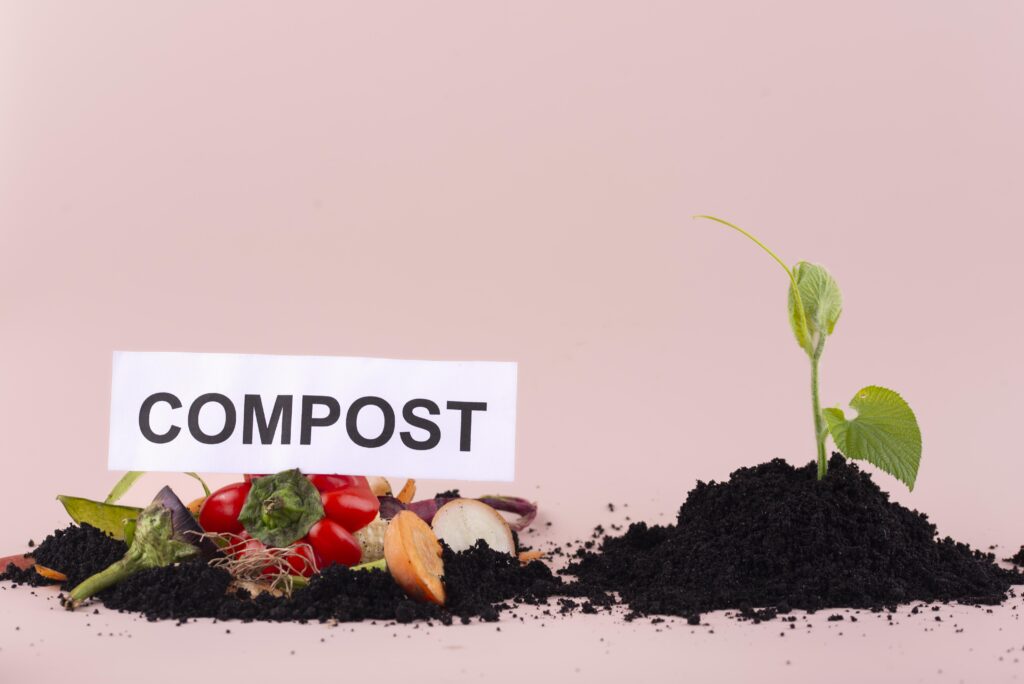
The Basics
- Composition: Organic compost is a mix of decomposed plant and animal matter. It’s like a nutrient buffet for your soil, offering a diverse array of minerals, vitamins, and organic goodness.
- Decomposition: Compost rapidly breaks down, releasing its nutrients into the soil. It’s the lifeblood of organic gardening, enriching the earth with essential elements.
Pros and Cons
- Nutrient Boost: Compost provides a feast of nutrients for your plants.
- Soil Structure: It improves soil structure, enhancing aeration and water retention.
- Microbial Activity: Compost teems with beneficial microbes, fostering a healthy soil ecosystem.
- Short-Lived: Compost decomposes relatively quickly, leaving its minerals behind but releasing carbon into the atmosphere as CO2.
- Nutrient Variability: The nutrient content of compost varies based on its source and composition.
2. Humic Acid: The Soil Elixir
The Science Behind Humus
- Definition: Humic acid is a group of stable, long-lasting biomolecules found in soil. It’s the essence of humus—the dark, mysterious substance that enriches soil health.
- Sources: Humic acid can come from decaying organic matter, such as compost, or be mined from ancient deposits.
Pros and Cons
- Carbon Storage: Humic acid directly contributes to humus levels, acting as a significant, long-lasting addition of carbon.
- Stability: Unlike compost, humic substances are stable and endure in the soil.
- Nutrient Bridge: Humic acid enhances nutrient availability and helps plant roots receive water and nutrients.
- Cost: High-quality humic acid products can be more expensive than compost.
- Ingredient Source: Know the origin and nutrient analysis of your humic acid source
Bottomline: The Winning Strategy
In the battle of organic compost vs. humic acid, both play crucial roles. Use compost to remineralize leached soils and boost microbial activity. Introduce humic acid for long-lasting soil health, nutrient availability, and carbon storage. Combine their powers wisely, and your soil will thrive—a champion lawn awaits!
Humic Acid vs. Fulvic Acid: Unraveling the Soil Secrets
When it comes to nurturing your soil, two heavyweight contenders step into the ring: organic compost and humic acid. Let’s break down their differences and discover which one packs the ultimate punch for your lawn and garden.
1. Humic Acid: The Soil Elixir
The Basics
- Composition: Humic acid is a group of stable, long-lasting biomolecules found in soil. It’s the essence of humus—the dark, mysterious substance that enriches soil health.
- Sources: Humic acid can come from decaying organic matter, such as compost, or be mined from ancient deposits.
Pros and Cons
- Carbon Storage: Humic acid directly contributes to humus levels, acting as a significant, long-lasting addition of carbon.
- Stability: Unlike compost, humic substances are stable and endure in the soil.
- Nutrient Bridge: Humic acid enhances nutrient availability and helps plant roots receive water and nutrients.
- Cost: High-quality humic acid products can be more expensive than compost.
- Ingredient Source: Know the origin and nutrient analysis of your humic acid source
2. Fulvic Acid for lawns: The Cellular Messenger
The Science Behind Fulvic Acid
- Definition: Fulvic acid is a smaller, more dynamic molecule derived from humic acid. It’s like the cellular messenger, shuttling nutrients into plant cells.
- Sources: Fulvic acid forms when humic acid breaks down further, creating a water-soluble compound.
Pros and Cons
- Cell Permeability: Fulvic acid crosses cell membranes, delivering nutrients directly into plant cells. It’s like a VIP pass for your grass.
- Chelation Power: Fulvic acid chelates minerals, making them more available for plant uptake.
- Electrolyte Balance: It maintains cellular balance, promoting overall plant health.
- Less Carbon: Fulvic acid contains less carbon than humic acid.
- Foliar Application: It’s excellent for foliar sprays but may not have the same impact in soil.
Bottomline: The Winning Strategy
In the humic acid vs. fulvic acid showdown, both play crucial roles. Humic acid provides stability and long-term carbon storage, while fulvic acid ensures cellular efficiency and nutrient delivery. Combine their powers wisely, and your soil will thrive—a champion lawn awaits!
In order to learn more about humic acid for lawn check out this video
FAQs
What is humic acid, and why should I use it on my lawn?
Humic acid is a natural compound derived from organic matter. It improves soil structure, enhances nutrient availability, and promotes overall lawn health.
How do I apply humic acid to my lawn?
Apply humic acid in spring and fall. Dilute liquid humic acid according to package instructions and water it into the soil. For granular humic acid, sprinkle it evenly and water thoroughly.
Is humic acid safe for my lawn and pets?
Yes, humic acid is safe for lawns and pets. It won’t harm your grass or furry friends.
Can I use humic acid with other fertilizers?
Absolutely! Humic acid complements other fertilizers. It enhances nutrient uptake and soil health.
How long does it take to see results after applying humic acid?
Results vary, but consistent use over time yields lasting benefits. Be patient—it’s worth it!

